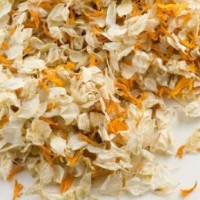Advantages of Using Autoclaved Aerated Concrete (Aac) Blocks in Construction
From decades there is a lot of research going on
in the construction industry; People are trying to find alternatives to
traditional material and technology used in construction to expand the use of
non-harmful but beneficial material and advanced technology.
Autoclaved
Aerated Concrete (AAC) blocks are one of the best alternatives to red bricks.
What is AAC?
AAC has a lot in common with regular concrete but
AAC excludes all the aggregate larger than sand. Quartz sand, calcite gypsum, lime (mineral) or cement and water are used as a
binding agent.
AAC differs from traditional concrete because it includes Aluminium powder. Aluminum powder is used at a rate of 0.05%–0.08% depending on volume and density. While mixing all this material, water reacts with dry aluminum powder and produces hydrogen gas. This gas cause bubbles in the mixture. They remain fixed in the place as the AAC dries. this results in the lightweight AAC blocks.
In some
countries, like India and China, fly ash generated from coal fire plants having
silica content is used as an aggregate.
There is a huge increase in the worldwide demand
for AAC
Manufacturing plants. AAC is known as Eco-friendly green material. Most of the builders are recommending AAC nowadays.
The methodology of AAC Manufacturing Plants reduced
energy consumption by minimizing some factors like heating and cooling.
Advantages of using
Autoclaved Aerated Concrete (AAC) blocks in the Construction
AAC blocks or material system is integrated with
structural components can be used for load-bearing and non-bearing application
as advised by structural engineers. AAC blocks can be assembled with the
minimum waste, lightweight and most importantly it is nontoxic green material
with the low production cost.
1. Fire Resistant and in natural disaster
AAC is non-combustible; the use of AAC blocks
eliminates the cost of additional fireproofing material. It does not emit toxic
gases when exposed to the fire.
AAC material is suggested for the high-risk
earthquake areas. AAC withstand the fire and earthquakes and the chances of
losses and damages are less when compared to other material used in
construction.
2. High Thermal Efficiency
AAC is considered as the sustainable construction
material because of its excellent insulating quality. An AAC block minimizes
changes in uncontrolled air and helps in maintaining the desired temperature
indoors.
The solid wall construction of AAC structure creates
airtight building envelope and maintains indoor temperature over 24 hours.
3. Moisture and Mortar
The drying Shrinkage i.e. Moisture movement of
the mortar is avoided in the AAC masonry construction. AAC ensures even
distribution of mortar and saves energy, water, and labor.
4. Improves
Indoor Air Quality and reduces noise pollution
Use of AAC in construction is very useful in
reducing noise pollution. The additional quality of AAC is it can reduce and
absorb noise and maintain indoor air quality.
Millions of independent air cells in AAC
blocks reduces sound transmission. AAC blocks have excellent sound insulation
and absorption qualities.
5. Use of AAC is very economic.
The production cost of AAC blocks is less than
other materials; also the bigger size of AAC blocks saves time and labor. Due
to the thermal efficiency of AAC blocks the cost of energy is low. Also, maintenance cost is negligible and loss during the construction is less
compared to normal red bricks.
6. Eco-friendly green material
In the manufacturing clay bricks, the quality
soil is depleted and natural resources are eroded. It results in major soil
erosion and ecological imbalance.
But in the production of AAC block, AAC
manufacturing plants use fly ash which is waste material generated by
thermal power stations.
Use of industrial waste material in production the way is beneficial and on the other hand, natural resources will be saved in
every sense.
AAC blocks or bricks are truly green material.
7. Structural
strength
The contraction capacity of AAC blocks is very
good, although it is one-fifth of the density of normal concrete, they are
lighter than normal bricks. It is easy and cheap to transport them. It reduces
overall dead load on the building, therefore extremely useful for tall
buildings; it also reduces the mass of the structure and decreases the impact of
earthquake.
AAC blocks are more convenient and effective than traditional concrete blocks; the nature of the blocks facilitates breathability, non-toxic atmosphere. It is ideal for residential as well as commercial projects. Considering environmental impact Autoclaved Aerated Concrete is a better choice for the building as well as the environment.






Comments